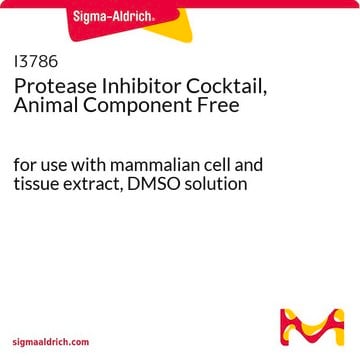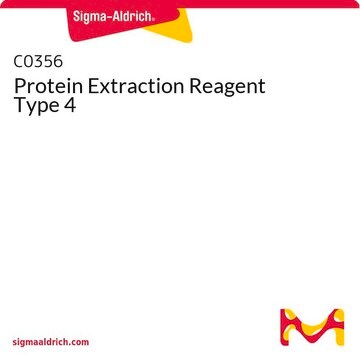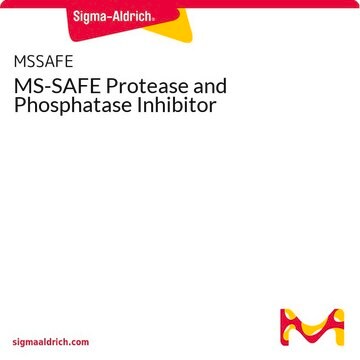P9599
Protease Inhibitor Cocktail
DMSO solution, for the inhibition of serine, cysteine, aspartic, metalloproteases and aminopeptidases, for plant cell and tissue extracts, DMSO solution
Synonym(s):
Protease Inhibitor Mix
About This Item
Recommended Products
product name
Protease Inhibitor Cocktail, for plant cell and tissue extracts, DMSO solution
Quality Level
form
DMSO solution
storage temp.
−20°C
Looking for similar products? Visit Product Comparison Guide
Related Categories
General description
Specificity
Application
Biochem/physiol Actions
Features and Benefits
Optimized and tested for use with plant tissue and cell extracts
Specifically tested on plant seedling extracts from pea, bean, wheat, tobacco, and Arabidopsis, as well as leaf and root extracts from pea, wheat, and tobacco
One mL of solution is recommended for the inhibition of protease activity in 100 mL of cell lysate from 30 g of various plant tissues or 10 g of baculovirus-infected cells
Components
Bestatin
E-64
Leupeptin
Pepstatin A
1,10-Phenanthroline
Caution
Quantity
Preparation Note
related product
Storage Class Code
10 - Combustible liquids
WGK
WGK 1
Flash Point(F)
185.0 °F - closed cup
Flash Point(C)
85 °C - closed cup
Certificates of Analysis (COA)
Search for Certificates of Analysis (COA) by entering the products Lot/Batch Number. Lot and Batch Numbers can be found on a product’s label following the words ‘Lot’ or ‘Batch’.
Already Own This Product?
Find documentation for the products that you have recently purchased in the Document Library.
Customers Also Viewed
Related Content
Select different protease inhibitor types based on your needs to prevent protein degradation during isolation and characterization and safeguard proteins in sample prep.
Select different protease inhibitor types based on your needs to prevent protein degradation during isolation and characterization and safeguard proteins in sample prep.
Select different protease inhibitor types based on your needs to prevent protein degradation during isolation and characterization and safeguard proteins in sample prep.
Select different protease inhibitor types based on your needs to prevent protein degradation during isolation and characterization and safeguard proteins in sample prep.
Our team of scientists has experience in all areas of research including Life Science, Material Science, Chemical Synthesis, Chromatography, Analytical and many others.
Contact Technical Service















